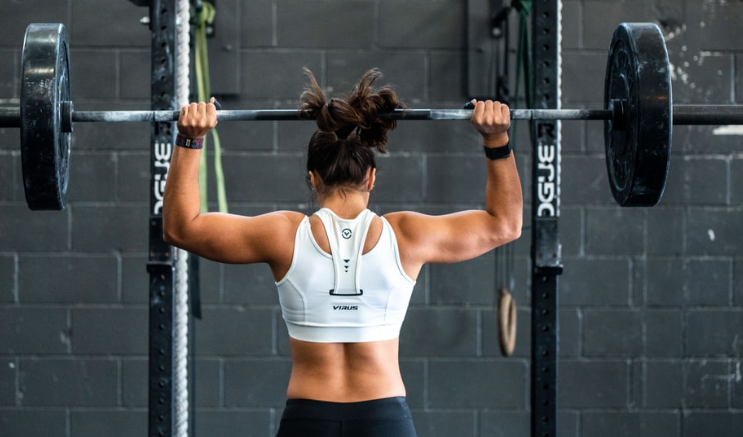


As is the case with anything else, every training style has benefits and obstacles. Today we’re going to be talking about specific types of training regiments, their goals, and their impact on overall joint health.
When it comes to performance, strength, conditioning, and overall function, we can evaluate the body’s capacity in several key ways: 1) overall strength (measure by how much weight you can handle), flexibility, range of motion with joints, and cardiovascular health. Depending your fitness goals, your workout regiment will be targeted towards specific rep counts, target heart rates, duration of workout, and intensity. We’re going to separate these regiments based on very general parameters and briefly outline their benefits and impact on spinal and joint health.
*Be advised that this article does NOT contain recommendations on diet, nutrition, tracking macros etc. nor is it a specific recommendation for how you should be exercising. We are viewing these regiments solely from a spinal and joint health perspective*
1. Strength Building Workouts.
Some of us want to build muscle! In order to build lean muscle mass, we generally want to keep our exercises in the 12-15rep range, with 50-60% of our max heart rate, with moderate intensity. Studies have shown that lifting weights is very effective at burning fat in additional to building muscle.
Caution: as we get stronger and stronger, we’re going to want to go up in weight. However, strong muscle and mobile joints are not the same thing. In fact, while stronger muscles are capable of providing more support to joints, we often over look mobility in the process of building muscle. We also have to make sure we throw in unilateral movements to correct any muscle imbalances.
For example, let’s imagine we did a shoulder workout 2x per week for 4 weeks. We’re going to show a lot of progress and pack on lean muscle in the traps, anterior delts, and rear delts. However, this doesn’t necessarily mean your shoulder is mobile and healthy. We must also work on our rotator cuffs, labrum, and mobility of the shoulder joint.
If we’re going to build lean muscle, we have to make sure we’re accounting for ligament and joint health as well so we don’t become more susceptible to injury!
2. Flexibility-Based Workouts
Let’s use yoga since this is the most relatable example. The benefits of yoga are well documented. From the standpoint of flexibility, joint health, blood pressure, and all of it’s benefits on serotonin production and mental health, yoga is a very viable exercise option. This would by far be the healthiest exercise regiment for your joint health.
Really the only caution towards this exercise grouping would be towards your expectation. When performed properly and consistently, yoga can actually be quiet effective in building muscle and burning fat. However, when compared to workouts like weight lifting, cardio, high intensity interval training etc. you may disappointed from a “calorie burning” standpoint.
3. High Intensity Interval Training (HIIT).
HIIT Training has become very popular over the last 10 years. The pitch is that it “burns more calories in a shorter amount of time”. This is true! But just like everything else, there’s more to the story than just calorie counting. When we burn a lot of calories at 80-90% of our max heart rate, we’re not only burning fats. We’re also burning carbs and losing weight in the form of electrolytes and water weight. In very extreme cases, we may actually be losing muscle mass, especially if our nutrition plan doesn’t account for enough calories, or proteins.
That being said, cardiovascular fitness is the number 1 indicator of an individuals overall health. HIIT will absolutely get your heart rate pumping and help you meet this requirement which is an AWESOME benefit. However, since we’re doing a high volume of exercise in a shorter amount of time (less rest between sets and higher rep counts), we have to keep an eye on inflammation and stress in the joints.
Joints “oil” themselves for function with a substance called synovial fluid. When the joints are lubricated properly, they are functioning at their best and allowing us to move pain free. However, when we exercise at high intensity levels 5-6 days per week, we require more and more synovial fluid to allow for motion. Additionally, the joints are more likely to become inflamed with HIIT training than other training regiments.
Caution: HIIT Training is a great tool for developing cardiovascular health. However, we must match the intensity with recovery, primarily for the joints. If we’re going to participate in HIIT, we must also participate in appropriate rest, yoga, and supplementation/diet to support joint health.
Chiropractic and Rehab can benefit all 3 of the training styles above!
Whether you’re participating in HIIT, strength building, or yoga, chiropractors can help keep everything in line and functioning properly. Professional athletes all over the world have been seeing chiropractors for years to allow their bodies to function at the highest level. It’s time you considered this too!


